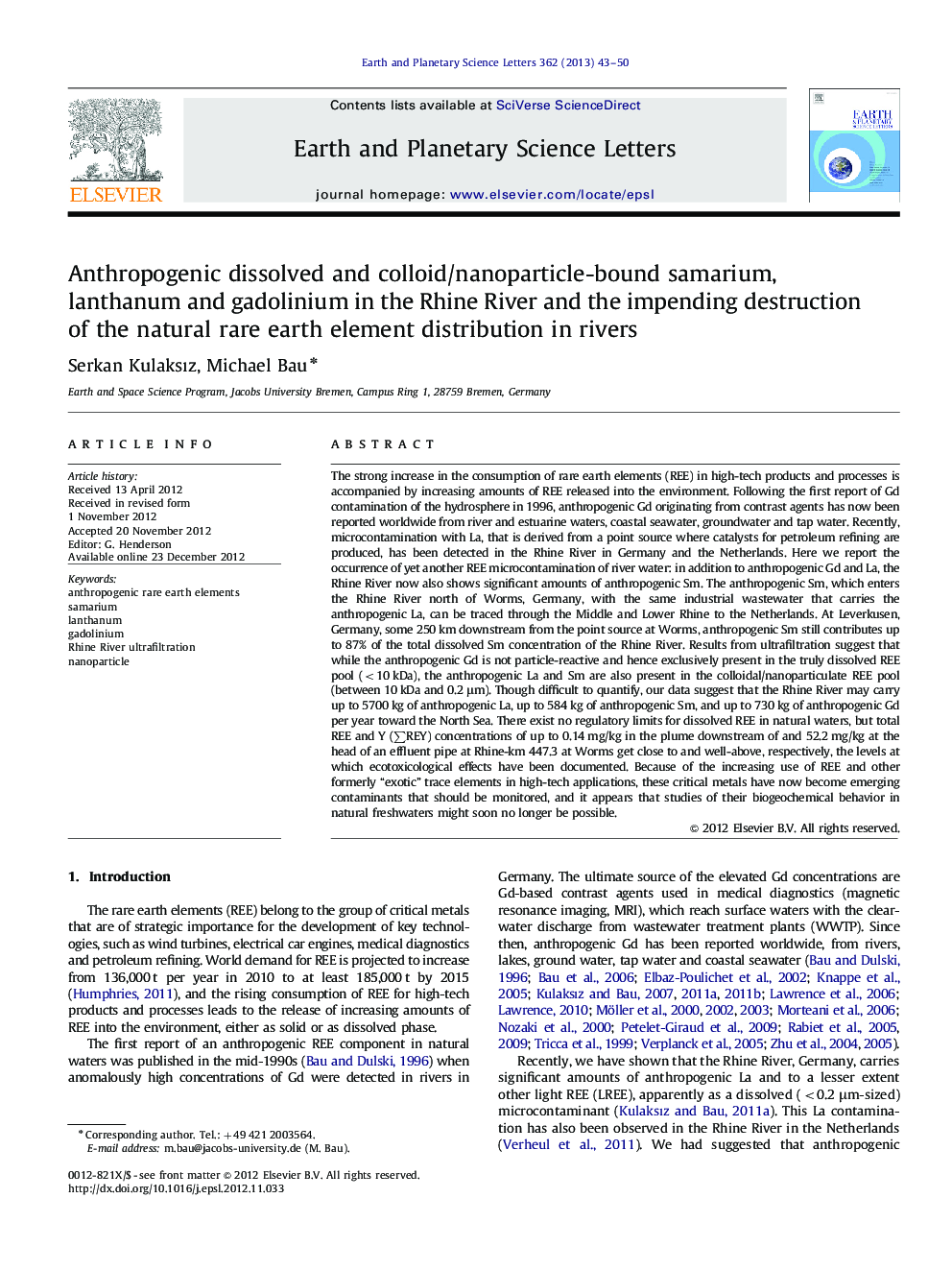| کد مقاله | کد نشریه | سال انتشار | مقاله انگلیسی | نسخه تمام متن |
|---|---|---|---|---|
| 4677243 | 1634791 | 2013 | 8 صفحه PDF | دانلود رایگان |
The strong increase in the consumption of rare earth elements (REE) in high-tech products and processes is accompanied by increasing amounts of REE released into the environment. Following the first report of Gd contamination of the hydrosphere in 1996, anthropogenic Gd originating from contrast agents has now been reported worldwide from river and estuarine waters, coastal seawater, groundwater and tap water. Recently, microcontamination with La, that is derived from a point source where catalysts for petroleum refining are produced, has been detected in the Rhine River in Germany and the Netherlands. Here we report the occurrence of yet another REE microcontamination of river water: in addition to anthropogenic Gd and La, the Rhine River now also shows significant amounts of anthropogenic Sm. The anthropogenic Sm, which enters the Rhine River north of Worms, Germany, with the same industrial wastewater that carries the anthropogenic La, can be traced through the Middle and Lower Rhine to the Netherlands. At Leverkusen, Germany, some 250 km downstream from the point source at Worms, anthropogenic Sm still contributes up to 87% of the total dissolved Sm concentration of the Rhine River. Results from ultrafiltration suggest that while the anthropogenic Gd is not particle-reactive and hence exclusively present in the truly dissolved REE pool (<10 kDa), the anthropogenic La and Sm are also present in the colloidal/nanoparticulate REE pool (between 10 kDa and 0.2 μm). Though difficult to quantify, our data suggest that the Rhine River may carry up to 5700 kg of anthropogenic La, up to 584 kg of anthropogenic Sm, and up to 730 kg of anthropogenic Gd per year toward the North Sea. There exist no regulatory limits for dissolved REE in natural waters, but total REE and Y (∑REY) concentrations of up to 0.14 mg/kg in the plume downstream of and 52.2 mg/kg at the head of an effluent pipe at Rhine-km 447.3 at Worms get close to and well-above, respectively, the levels at which ecotoxicological effects have been documented. Because of the increasing use of REE and other formerly “exotic” trace elements in high-tech applications, these critical metals have now become emerging contaminants that should be monitored, and it appears that studies of their biogeochemical behavior in natural freshwaters might soon no longer be possible.
► First report of anthropogenic Sm anomaly in river water.
► Rhine River shows anthropogenic Sm, La and Gd.
► Ultrafiltration reveals anthropogenic Gd exclusively truly dissolved.
► Anthropogenic La and Sm also colloid/nanoparticle-bound.
► Rare earths have become emerging contaminants in the hydrosphere.
Journal: Earth and Planetary Science Letters - Volume 362, 15 January 2013, Pages 43–50
